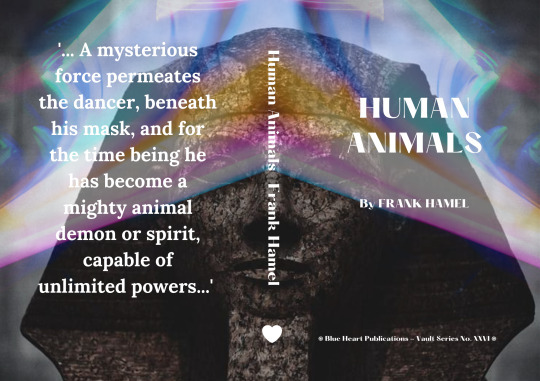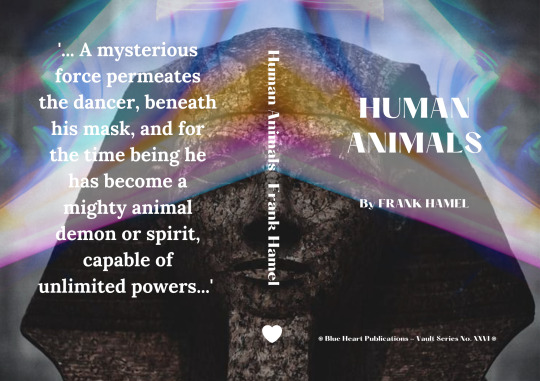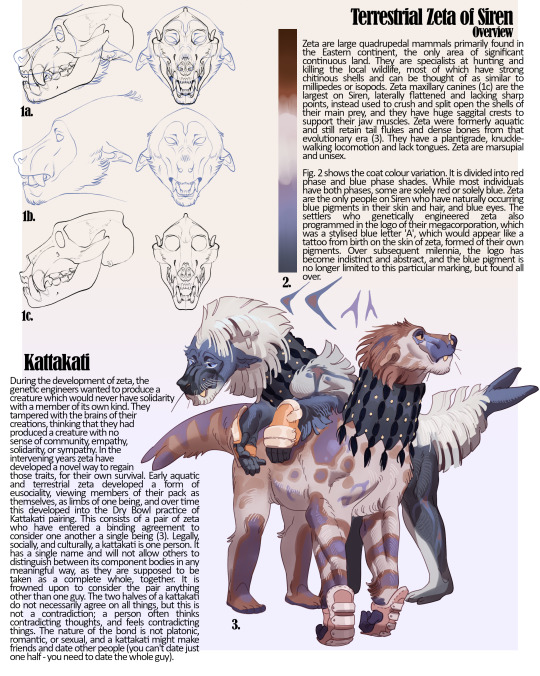#Scientific exploration
Explore tagged Tumblr posts
Text

In the Beginning: A Scientific Exploration of Life’s Hypothetical Origins
In the most profound of inquiries, humanity seeks to comprehend the genesis of its own existence, prompting a meticulous examination of the Earth’s primordial landscape. This quest to unravel the mysteries of life’s origins has captivated scientists and scholars for centuries, leading to a nuanced understanding of the intricate interplay between chemical, biological, and environmental factors that potentially gave rise to the first living organisms.
Approximately 4 billion years ago, the Earth’s canvas was vastly different from the one we know today, with minimalistic cells emerging amidst this alien landscape. Characterized by carboxylic acid membranes and RNA-driven heredity, these primitive entities laid the foundational blueprint for the astounding complexity that would eventually follow. The evolution of ribozymes, capable of catalyzing metabolic reactions, was a seminal moment, bridging the gap between a lifeless chemistry and the nascent biochemistry of early organisms. This development not only enhanced cellular capabilities but also underscored the symbiotic relationship between genetic innovation and environmental pressures.
The pursuit of energy, a fundamental drive in the evolution of life, led early organisms to harness the planet’s primordial power sources. Mineral catalysis and reactive phosphorus species might have played crucial roles in the synthesis of ATP, with the Wood-Ljungdahl pathway exemplifying the resourcefulness of these early life forms in exploiting available energy sources.
Our exploration of the Earth’s history leads us to Luca, the Last Universal Common Ancestor, whose characteristics offer a fascinating glimpse into the life of our most ancient shared forebear. The proposed environment of Luca, akin to the chemistry-rich settings of volcanic vents, underscores the profound connection between life’s emergence and the planet’s geochemical landscape. Furthermore, the concept of the Origin of Life Domain (OLD) invites us to contemplate the possibility of alternative life forms, unconnected to Luca’s lineage, and the uncharted scientific territories that await discovery.
From the First Organism to LUCA - The Evolution of Life's Core Processes (Wolfpack Astrobiology, March 2024)
youtube
Life Began Much Faster Than We Thought (Sabine Hossenfelder, December 2024)
youtube
Saturday, December 7, 2024
#scientific exploration#hypothetical origins#primordial landscape#biochemical pathways#life's beginnings#interdisciplinary approaches#environmental pressures#genetic innovation#presentations#ai assisted writing#machine art#Youtube
7 notes
·
View notes
Text
Galaxy Celestial Framed Posters

About product
Celestial Galaxy Framed Posters offer a cosmic and dreamy vibe to any space. Perfect for those who love stargazing, astrology, or simply enjoy a mystical atmosphere in their decor. Ideal for home offices, bedrooms, or as a unique gift for astronomy enthusiasts. Relevant for birthdays, housewarmings, or any occasion that calls for a touch of the universe.
Product features - Vibrant colors with MI maki UV Inks - Ready to hang with wire hanging kit included - 200 gem semi-gloss coated paper with Perspex cover - 18 sizes to choose from - Visit Our Store from Here
2 notes
·
View notes
Text
"Unraveling the Human Tapestry: Frank Hamel's 'Human Animals'—A Journey into the Complex Nature of Humanity"

Frank Hamel's "Human Animals" is a thought-provoking exploration of the intricate interplay between our human nature and the animal instincts that reside within us. This fascinating journey into the realms of biology, psychology, and societal constructs unfolds with a narrative precision that both challenges and enlightens. The title itself serves as a prelude to a comprehensive examination of the dualities that define our existence—a title that hints at the untamed aspects of our being, waiting to be unraveled.
Published in [Year], "Human Animals" is a testament to Hamel's keen intellectual curiosity and his ability to distill complex concepts into a narrative accessible to a broad audience. The title alludes to the central theme—the recognition that beneath our veneer of civilization, there exists a primal essence shared with our fellow creatures in the animal kingdom.
Hamel's exploration begins with a scientific lens, dissecting the biological similarities between humans and other animals. The opening chapters lay the groundwork for understanding our shared ancestry, evolutionary traits, and the genetic links that bind us to the broader animal kingdom. The title "Human Animals" becomes a guide through this scientific inquiry, inviting readers to reconsider their perception of human uniqueness.
Beyond the biological, Hamel delves into the psychological dimensions of our shared humanity. He navigates the complexities of human behavior, emotions, and social structures, drawing connections between our actions and those observed in the animal world. The title encapsulates this psychological journey, suggesting that within our societal constructs, there exist primal instincts that shape our behaviors.
Hamel's writing is not merely an academic discourse; it is a bridge between the scientific and the philosophical. The narrative is enriched by anecdotes, case studies, and historical examples that add a human touch to the exploration. The title serves as a thematic compass, signaling to readers that they are embarking on a nuanced exploration of what it means to be human, entwined with our animalistic roots.
As the book progresses, Hamel ventures into the ethical considerations surrounding our treatment of animals and the environmental impact of human activities. The title becomes a poignant reminder of the responsibility we bear as stewards of the planet, urging readers to reflect on the consequences of our actions on the delicate balance of the natural world.
"Human Animals" is not just an examination of our shared biological heritage; it is a call to introspection and societal self-reflection. Hamel challenges preconceived notions, inviting readers to confront uncomfortable truths about the intersections of humanity and animality. The title, with its enigmatic allure, guides readers through a labyrinth of ethical contemplation.
In conclusion, "Human Animals" by Frank Hamel is a captivating exploration that transcends disciplinary boundaries. The title encapsulates the essence of the book—a multifaceted exploration of the intricate connections between humanity and the animal kingdom. Hamel's prose is engaging, his ideas are profound, and the title acts as an evocative portal into the depths of our shared nature. As readers journey through the pages, "Human Animals" leaves an indelible impression, challenging us to peel back the layers of societal conditioning and reevaluate our place within the vast tapestry of the natural world.
Frank Hamel's "Human Animals" is available in Amazon in paperback 15.99$ and hardcover 23.99$ editions.
Number of pages: 399
Language: English
Rating: 9/10
Link of the book!
Review By: King's Cat
#Frank Hamel#Human Animals#Biological similarities#Animal instincts#Dualities of existence#Evolutionary traits#Genetic links#Animal kingdom#Scientific exploration#Primal essence#Shared ancestry#Psychological dimensions#Human behavior#Social structures#Societal constructs#Human uniqueness#Philosophical inquiry#Anecdotes#Case studies#Historical examples#Ethical considerations#Environmental impact#Stewards of the planet#Consequences of actions#Delicate balance#Responsibility#Call to introspection#Societal self-reflection#Challenging preconceived notions#Uncomfortable truths
5 notes
·
View notes
Photo








Pierre Jacotin – Scientist of the Day
Pierre Jacotin, a French topographical engineer and cartographer, was born Apr. 11, 1765.
read more...
#Pierre Jacobin#Napoleon#Egypt#scientific exploration#cartogrphy#histsci#histSTM#18th century#19th century#history of science#Ashworth#Scientist of the Day
11 notes
·
View notes
Text
The explorations have far to go, but to many it feels as though our species is finally reaching childhood's end.
"The Fabric of the Cosmos" - Brian Greene
#book quote#the fabric of the cosmos#brian greene#nonfiction#scientific exploration#humanity#growing up
0 notes
Text
Journey Through Celestial History: Famous Solar Eclipses
Hey there, fellow cosmic explorers! Have you ever gazed up at the sky and wondered about the extraordinary events that have shaped human history? Well, get ready for a journey through time as we dive into the captivating world of solar eclipses! These celestial phenomena have left an indelible mark on our civilization, influencing everything from science to culture. Join me as we uncover some of…

View On WordPress
#Astronomy#Edmund Halley#Great American Eclipse#History#Scientific Exploration#Solar Eclipses#Thales Eclipse
0 notes
Link
Dive into the chilling world of Gothic Literature with our latest read—Frankenstein’s Tale: A Narrative of Ambition and Fall. Uncover the tale of ambition, creation, and consequence that haunts to this day. Are you ready to meet Victor Frankenstein and his creation? The masterpiece that forever changed the way we see science and ethical boundaries ⚡️📚 #Frankenstein
0 notes
Text
"Unraveling the Human Tapestry: Frank Hamel's 'Human Animals'—A Journey into the Complex Nature of Humanity"

Frank Hamel's "Human Animals" is a thought-provoking exploration of the intricate interplay between our human nature and the animal instincts that reside within us. This fascinating journey into the realms of biology, psychology, and societal constructs unfolds with a narrative precision that both challenges and enlightens. The title itself serves as a prelude to a comprehensive examination of the dualities that define our existence—a title that hints at the untamed aspects of our being, waiting to be unraveled.
Published in [Year], "Human Animals" is a testament to Hamel's keen intellectual curiosity and his ability to distill complex concepts into a narrative accessible to a broad audience. The title alludes to the central theme—the recognition that beneath our veneer of civilization, there exists a primal essence shared with our fellow creatures in the animal kingdom.
Hamel's exploration begins with a scientific lens, dissecting the biological similarities between humans and other animals. The opening chapters lay the groundwork for understanding our shared ancestry, evolutionary traits, and the genetic links that bind us to the broader animal kingdom. The title "Human Animals" becomes a guide through this scientific inquiry, inviting readers to reconsider their perception of human uniqueness.
Beyond the biological, Hamel delves into the psychological dimensions of our shared humanity. He navigates the complexities of human behavior, emotions, and social structures, drawing connections between our actions and those observed in the animal world. The title encapsulates this psychological journey, suggesting that within our societal constructs, there exist primal instincts that shape our behaviors.
Hamel's writing is not merely an academic discourse; it is a bridge between the scientific and the philosophical. The narrative is enriched by anecdotes, case studies, and historical examples that add a human touch to the exploration. The title serves as a thematic compass, signaling to readers that they are embarking on a nuanced exploration of what it means to be human, entwined with our animalistic roots.
As the book progresses, Hamel ventures into the ethical considerations surrounding our treatment of animals and the environmental impact of human activities. The title becomes a poignant reminder of the responsibility we bear as stewards of the planet, urging readers to reflect on the consequences of our actions on the delicate balance of the natural world.
"Human Animals" is not just an examination of our shared biological heritage; it is a call to introspection and societal self-reflection. Hamel challenges preconceived notions, inviting readers to confront uncomfortable truths about the intersections of humanity and animality. The title, with its enigmatic allure, guides readers through a labyrinth of ethical contemplation.
In conclusion, "Human Animals" by Frank Hamel is a captivating exploration that transcends disciplinary boundaries. The title encapsulates the essence of the book—a multifaceted exploration of the intricate connections between humanity and the animal kingdom. Hamel's prose is engaging, his ideas are profound, and the title acts as an evocative portal into the depths of our shared nature. As readers journey through the pages, "Human Animals" leaves an indelible impression, challenging us to peel back the layers of societal conditioning and reevaluate our place within the vast tapestry of the natural world.
Frank Hamel's "Human Animals" is available in Amazon in paperback 15.99$ and hardcover 23.99$ editions.
Number of pages: 399
Language: English
Rating: 9/10
Link of the book!
Review By: King's Cat
#Frank Hamel#Human Animals#Biological similarities#Animal instincts#Dualities of existence#Evolutionary traits#Genetic links#Animal kingdom#Scientific exploration#Primal essence#Shared ancestry#Psychological dimensions#Human behavior#Social structures#Societal constructs#Human uniqueness#Philosophical inquiry#Anecdotes#Case studies#Historical examples#Ethical considerations#Environmental impact#Stewards of the planet#Consequences of actions#Delicate balance#Responsibility#Call to introspection#Societal self-reflection#Challenging preconceived notions#Uncomfortable truths
0 notes
Text
0 notes
Text
An Intellectual Journey through Evolution and Spirituality

Piet D. Botha's work, titled "Yesterday, Today, and Tomorrow: Evolution and the Noosphere," extensively explores the intricate relationship among science, evolution, and spirituality. This thoroughly researched piece offers readers an enlightening journey through these challenging themes and introduces a fresh perspective on their potential harmonious coexistence.
Piet D. Botha, as an author, showcases a profound comprehension of the topics he addresses, referencing notable figures like Charles Darwin, Teilhard de Chardin, and Stephen Hawking. This extensive array of sources not only reinforces his assertions but also furnishes readers with a robust groundwork for delving into the intricacies of these profound subjects.
The book is meticulously divided into chapters that explore different aspects of spirituality, evolution, and the noosphere. It begins by outlining the progression of evolutionary theory throughout history, giving a succinct and understandable synopsis of important ideas. It is admirable how Botha can translate difficult scientific concepts into understandable words.
This book's examination of the peaceful coexistence of evolution and faith is one of its best features. Botha makes a strong case for the possibility that spirituality and science may coexist and perhaps strengthen one another. He invites readers to adopt an outlook that values mutual enrichment between religion and scientific knowledge, promoting harmony rather than conflict. With this method, conventional dichotomies are questioned, and readers are encouraged to think about how these two worldviews may coexist peacefully.
The author's writing often reflects an academic tone, which is suitable for readers with a keen interest in the topics discussed. However, this academic style might pose a challenge for a broader audience seeking a more accessible narrative. Despite this, Botha's arguments are well-researched and meticulously documented, providing a sturdy foundation for his thesis.
Still, there are some issues with the book. It might occasionally be difficult for readers to follow the author's argument consistently due to the lack of structural coherence. An improved organization of content could enhance the overall reading experience.
In conclusion, the book "Yesterday, Today, and Tomorrow: Evolution and the Noosphere" invites readers to delve deeply into intricate issues pertaining to faith, science, and evolution. It offers a valuable opportunity to reconsider how we perceive the intersections of these subjects. While it has its strengths, such as intriguing perspectives and rich references, it is hindered by structural incoherence and editing issues. However, for those willing to delve into these challenging themes, the book provides an intellectually rewarding experience.
I would rate this book 4/5 for its invaluable insights and the author's audacious attempt to harmonize seemingly contrasting worldviews, despite deductions for structural and editing issues that impact the overall reading experience.
#Evolution#Spirituality#Science and Faith#Noosphere#Piet D. Botha#Non-Fiction#Intellectual Journey#Charles Darwin#Teilhard de Chardin#Stephen Hawking#Scientific Exploration#Harmonious Coexistence#Worldview#Thought-Provoking#Complex Themes#Religious Philosophy#Faith and Reason#Scientific Understanding#Academic Writing#Interdisciplinary Perspective#online book club
1 note
·
View note
Text
Embark on a thrilling cosmic journey with us as we explore the Supra Thermal & Energetic Particle Spectrometer (STEPS), a crucial component of Aditya-L1's ASPEX payload, and discover the secrets of space particles from the Sun before it reaches its final destination at the L1 point!
#SpaceExploration #SolarProbe #STEPS #ASPEXMission #AdityaL1 #SpaceWeather #Sun #CosmicJourney #L1Point #SpaceExploration #SolarParticles #STEPS #BeforeDestination #ASPEX #SpaceWeather #Sun #SpaceScience #CosmicMysteries

#Supra Thermal & Energetic Particle Spectrometer#Aditya-L1 Solar Probe#ASPEX payload#Earth's magnetic field#spacecraft mission#space research#scientific exploration#cosmic mysteries#MR. GK#electrons in space#L1 point#pre-destination insights.#Chandrayaan-3#ISRO#Lunar Exploration#Pragyaan Rover#Space Discovery#Moon Mission#Lunar Surface#Space Exploration#Lunar Secrets#Space Agency#Lunar Exploration Update.#rover#isro#MADAN GOWRI#TAMIL POKKISHAM
0 notes
Text

Tarim Basin, northwest China's Xinjiang Uygur Autonomous Region
China's 10,000-Meter Deep Dive into Scientific Exploration! Situated in The Tarim Basin, The Drill Will Be a Tricky One.
— Sejal Sharma | Wednesday May 31, 2023
In a first, China will drill a 6.2 mile (10,000-meter) superdeep borehole into the Earth’s crust in its quench for scientific exploration. The drilling began Tuesday in China’s large oil-bearing basin - the Tarim Basin of northwest China's Xinjiang Uygur Autonomous Region.
China has been exploring the deep Earth for many years. Only last week, it was reported that the world’s second-largest economy completed building a 12,000-tonne offshore drilling rig to mine the geological reserves of natural gas.
Now with the almost 10-kilometer superdeep hole, the country aims to unearth rich minerals and energy resources and study the deep uncharted composition of the Earth’s surface. The drill has a design depth of over 11,000 meters.
In the drilling process, the 2,000-tonne heavy equipment, which includes drill bits and drill pipes, will go deep into the Earth, penetrating over 10 continental strata or layers of rock formation. The drilling will also go beyond the Cretaceous system, a series of layered rocks below the oldest tertiary deposits and above the Jurassic system, which ended about 145.5 million years ago.

Chinese scientists have begun drilling a 10,000-meter (32,808 feet) hole into the Earth’s crust, as the world’s second largest economy explores new frontiers above and below the planet’s surface — Bloomberg
In a 2021 speech addressing the nation's leading scientists, Chinese President Xi Jinping called for greater progress in deep Earth exploration, reported Bloomberg. Such work can also help assess the risks of environmental disasters, such as earthquakes and volcano eruptions.
Drilling through these layers of rocks can be tricky since the borehole is being dug in the Tarim Basin, which is a tough territory. Tarim Basin is a vast depression of land drained by the Tarim River. The climate is typically dry, and in the middle of the basin lies the TaklaMaTaklamakankan Desert, where the drilling occurs. Surrounded by high mountain ranges, TaklaMakan is one of the largest desert regions in the world and the largest in China.
"The construction difficulty of the drilling project can be compared to a big truck driving on two thin steel cables," said Sun Jinsheng, an academician at the Chinese Academy of Engineering, in an interview with Xinhua.
The deepest artificial hole on Earth is the Russian Kola Superdeep Borehole, which took 20 years to reach a depth of 12,262 meters (40,230 feet) in 1989.
1 note
·
View note
Text

I gave up on editing and did this instead check it out. I had a rough time with the zeta because they kept getting too anthro dog-ish and I wanted them to read as primates. The one pictured there is a crew member on a whaling vessel (chef and lookout).
Image description and transcript of text below the cut:
[Figure 1 description: Front and side views of a zeta's face with the skull and external anatomy overlaid and separate. The skull is similar to a baboon's with massive broad fangs and a huge saggital crest on top for muscle attachment. Figure 2 description: a bar of colours ranging from dark brown, to reddish, to pale cream, to violet, to blue, to dark blue. Beneath it are several blue markings resembling a stylised 'A' or an arrow. Figure 3 description: a pair of zeta standing together. They are blue, brown, and cream in colour and wearing fancy black collars with dark tassels, and knuckle-guards to protect their feet. They have stocky muscular bodies and ape-like heads. One is propped up on their elbows over the back of the other, looking in a different direction.]
Text reads:
Terrestrial Zeta of Siren: Overview
Zeta are large quadrupedal mammals primarily found in the Eastern continent, the only area of significant continuous land. They are specialists at hunting and killing the local wildlife, most of which have strong chitinous shells and can be thought of as similar to millipedes or isopods. Zeta maxillary canines (1c) are the largest on Siren, laterally flattened and lacking sharp points, instead used to crush and split open the shells of their main prey, and they have huge saggital crests to support their jaw muscles. Zeta were formerly aquatic and still retain tail flukes and dense bones from that evolutionary era (3). They have a plantigrade, knuckle-walking locomotion and lack tongues. Zeta are marsupial and unisex.
Fig. 2 shows the coat colour variation. It is divided into red phase and blue phase shades. While most individuals have both phases, some are solely red or solely blue. Zeta are the only people on Siren who have naturally occurring blue pigments in their skin and hair, and blue eyes. The settlers who genetically engineered zeta also programmed in the logo of their megacorporation, which was a stylised blue letter 'A', which would appear like a tattoo from birth on the skin of zeta, formed of their own pigments. Over subsequent milennia, the logo has become indistinct and abstract, and the blue pigment is no longer limited to this particular marking, but found all over.
Kattakati
During the development of zeta, the genetic engineers wanted to produce a creature which would never have solidarity with a member of its own kind. They tampered with the brains of their creations, thinking that they had produced a creature with no sense of community, empathy, solidarity, or sympathy. In the intervening years zeta have developed a novel way to regain those traits, for their own survival. Early aquatic and terrestrial zeta developed a form of eusociality, viewing members of their pack as themselves, as limbs of one being, and over time this developed into the Dry Bowl practice of Kattakati pairing. This consists of a pair of zeta who have entered a binding agreement to consider one another a single being (3). Legally, socially, and culturally, a kattakati is one person. It has a single name and will not allow others to distinguish between its component bodies in any meaningful way, as they are supposed to be taken as a complete whole, together. It is frowned upon to consider the pair anything other than one guy. The two halves of a kattakati do not necessarily agree on all things, but this is not a contradiction; a person often thinks contradicting thoughts, and feels contradicting things. The nature of the bond is not platonic, romantic, or sexual, and a kattakati might make friends and date other people (you can't date just one half - you need to date the whole guy).
#told ya it was unethical#setting: siren#i know empathy is a charged word here but it's hard to discuss the effects of the GMO without falling back on it#they basically turned off the part of the brain that says We Live In A Society and a bunch of other stuff besides#is it scientific? no. i just wanted to explore what is necessary to reverse-engineer 'society' back into a population#speculative biology
450 notes
·
View notes
Text
I NEED a Belgica show, I need for more people to be unwell about danco and lecointe with me pleeeease
#just#danco was doing these scientific observations and doing such a bad job#because he didnt know what he was doing#and when he got too ill to keep it up#lecointe took over#in secret hoping to surprise him#but then danco got worse and died#thats so sweet and heartbreaking#belgica#polar exploration#i guess its better to have no show than to have one where they wildly misrepresent the guys#ill tell myself that#sigh
82 notes
·
View notes
Text
For pure science it went pretty well. The recipe I settled on was about 6 scoops of ice cream (I have a small scoop), 1 1/5 shots of vodka, and a splash of milk. I also enjoy adding about half a banana.
It tastes amazing, but it pretty liquidy. I was using some pretty cheap ice cream, so I did try it with out milk in hopes of thickening it up, but it was about the same consistency. I’m going to keep playing with the recipe and I’ll update y’all. If anyone has any tips or suggestions, please send them my way.
College isn't about school. College is about figuring out the best way to create a chocolate milkshake with vodka while maintaining the right consistency.
#and i’m doing great#i’ll drop the recipe once i figure it out#college#home cooking#cooking#cookbook#recipe#milkshake recipe#vodka drinks#science side help me#baking#science#science side of tumblr#hypotheses#scientific exploration
64 notes
·
View notes
Text
Sombroek studied them for his PhD thesis, and in 1966 published a book, Amazon Soils, initiating scientific exploration into these unnaturally dark soils, rock became known as terra preta.
"Soil: The incredible story of what keeps the earth, and us, healthy" - Matthew Evans
#book quote#soil#matthew evans#nonfiction#wim sombroek#amazon basin#phd thesis#60s#1960s#20th century#amazon soils#scientific exploration#dark soil#fertile soil#terra preta
0 notes